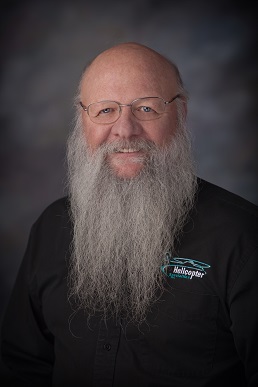
When Did His Creation Become a Monster?


We have all seen at least one version of the movie “Dr. Frankenstein,” based on Mary Shelley’s 1818 novel. It is the fictional story of the good Dr. Frankenstein who, in his quest to advance science, went too far with his over-reaching goals that resulted in unintended consequences. His original intentions to serve humanity and save lives led him to believe he could bring back life, but he only ended up creating a monster.
The Dr. Frankensteins that I am referring to in this modern-day tale are aamong us. While Shelly’s Dr. Frankenstein used technology to create his monster, the technology advances we have implemented in our hangars can create monsters of another sort.
As you can probably guess by now, I am a baby boomer and not very computer literate. This is not to say that I don’t appreciate the computer. I am sitting here writing this article right now, tickled pink that I’m not using my old IBM typewriter with its “spell check” capabilities (a ream of paper, a bottle of white out and a large waste basket). I love the word processor and the internet research capabilities.
You will get no argument from me that computers and the different applications software manufacturers have developed have advanced the aviation industry immensely. Some of the tasks made easier by computer and internet technology are:
- Training
- Searching for parts and services
- Log book entries and work orders
- Records archiving
- AD searches
- Manuals navigation
- Inventory
- Billing invoices for customers
- Technical reliability reports
- Warranty claims processing
- Aircraft availability for operations
- And EVEN reading magazines
These are just a few of the tasks to benefit the many people and departments that it takes to run an aviation organization. As I said earlier, Dr. Frankenstein started with the best of intentions, and I believe the computers and the technology that we use are a huge help. My biggest fear is that in our quest to implement technology that will do everything for everyone, our company management that selects and implements this technology often puts most of the burden for collecting all of the data needed to satisfy all of the departments squarely on the shoulders of the mechanic. I am afraid the modern day Dr. Frankensteins may be creating a monster called distraction.
Distraction
I work for a Part 145 repair station. As an example of what I’m talking about — a few years ago, my company purchased a fairly simple software program designed especially for Part 145 repair stations. There are many tiers to this program that link up for aircraft records keeping, parts ordering, manpower time keeping, billing for accounting and work order management. It has provisions for generating a logbook entry but we have found it lacking. After getting this software for the few computers we had, we found that we didn’t have enough computers for the amount of mechanics that we had and they were required to go to the maintenance office to use them. Technology advances, so we purchased about a dozen more computers with workstation podiums that could be placed right next to the aircraft for maintenance.
As another example, the aircraft manufacturers have started putting their technical manuals on CD/ROM that we can load into our computers to have access to them. From the time a project begins on an aircraft to the time the customer picks it up and leaves, the mechanic tracks it on the computer. This solves some obvious problems, but also produces a new set of problems that I will address shortly.
No system is perfect. Keep that in mind when deciding to implement computer technology in your organization. Here are some examples of the problems that I have observed and that I have had to deal with. This is by no means a complete list:
- When I look out on the hangar floor, I see mechanics who are so engrossed with the computer monitor they no longer see the aircraft. I have been there, too. I have spent many hours trying to navigate the software to find what I was looking for. (In the old days, I used to go to the greasy pages of the manual.)
- My mechanics have been printing off the pages that they needed so they can climb up on the aircraft to do their inspections. Besides seeing the line of mechanics at the printer, I find all of these pages of paper data stacking up around the hangar. I have had to remind them constantly that this paperwork must be destroyed after use because there is no way to guarantee if it is current, should the mechanic want to use it again at a later date.
- Since we purchased a server for more storage and standardization, the term “the server is down” has been catastrophic for the mechanics. Nobody can do anything.
- For the most part, this technology is not free. My technical library “budget” has gone through the roof and I have to pay annually for each “access seat” of this software.
- We have had to contract an outside company to maintain our system and back-up capabilities.
- Files are something we have basically allowed access to by everyone in the company. More times than not, we are spending hours just trying to find archived data because everyone has their own idea about filing.
- Deleting files and data, whether accidental or intentional, has lead to many lost days searching for important information.
- Our software isn’t too bad, but most of the software that I have seen demands that all of the data entry be made at the floor level by the mechanic. The mechanic is now supporting all of the departments in the company instead of them supporting him or her.
- Unfortunately, we have also found some of our mechanics surfing the internet instead of focusing on the aircraft maintenance. Sometimes they must go online for research, but it is too easy to get distracted and lost.
These are just a few of the problems that I have encountered. I don’t think that we are unique and I am not throwing the blame on my mechanics. I just feel that things have changed so much in the last decade.
We have to remember the mechanic’s primary job function. When an aircraft is in for maintenance, he or she must be able to concentrate completely on that aircraft. As a company, we can’t just sit at our desks and expect the mechanic to do all of the data collection and entry it takes to satisfy all of the other departments’ requirements. We need to do whatever it takes to support the mechanic and keep him or her focused.
For all of the benefits to the industry that I have listed above, that software can’t relieve the mechanic of his responsibilities for the airworthiness of his or her aircraft. Computers can’t install cotter pins in flight controls or safety wire PC links. All of the technology in the world can’t replace the mechanic’s toolbox, training and duty to the aircraft and our profession.
This is just a friendly warning to all of the Dr. Frankensteins out there. You don’t want to see the villagers coming up the mountain carrying torches, do you?
 Terry L. Peed has been in Aviation for 43 years and is a licensed A&P and IA. He is the chief inspector for Helicopter Specialties Inc., a certificated FAA repair station that performs heavy helicopter maintenance, completions with painting capabilities and avionics installations.
Terry L. Peed has been in Aviation for 43 years and is a licensed A&P and IA. He is the chief inspector for Helicopter Specialties Inc., a certificated FAA repair station that performs heavy helicopter maintenance, completions with painting capabilities and avionics installations.
